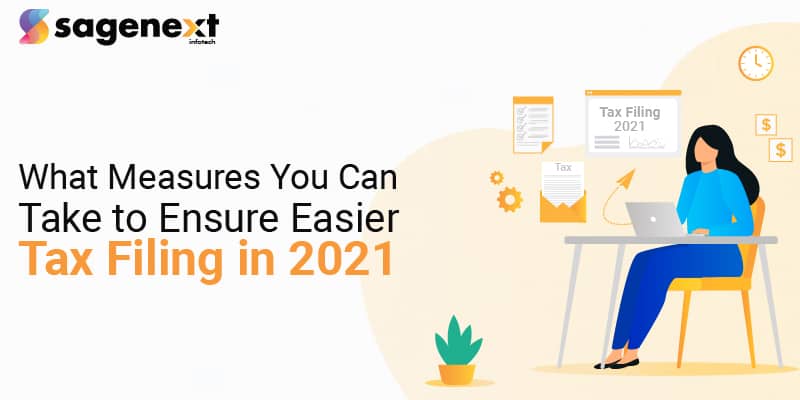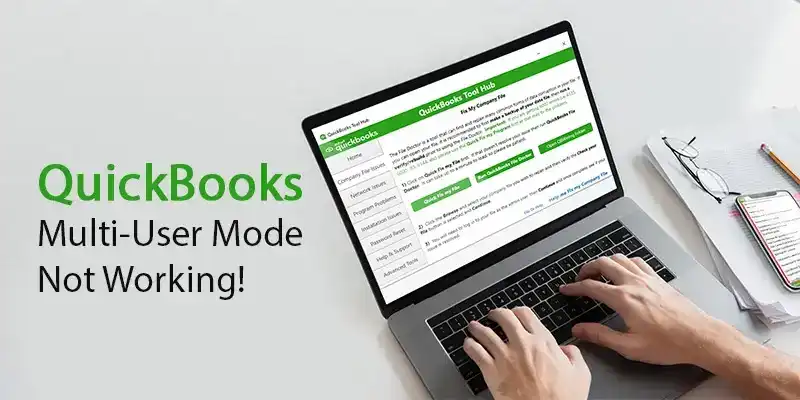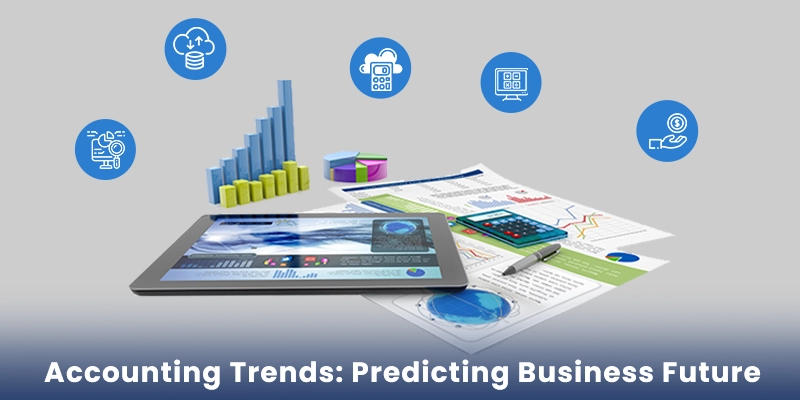
What Measures You Can Take to Ensure Easier Tax Filing in 2021?
Filing federal taxes is a demanding task. It requires you to thoroughly study your financial accounts and tax records. Hence, you need to have your tax planning in place for being ready to file your income tax returns, accurately as well as timely. Else, you have a daunting task ahead of yourself at the eleventh hour.
To assist all the valuable taxpayers, the Internal Revenue Service (IRS) issues encouragements plans, occasionally. These plans help you take the necessary steps to ensure easier tax filings.

The IRS, on November 24, 2020, released another reminder for helping people get ready for the forthcoming tax season. The reminder mentions a special page dedicated to helping you with all the steps that you can take. The page is IRS’s acknowledgment of 2020 being a turbulent year of everyone.
The IRS wants to make sure no one makes mistakes while filing their taxes or misses out on deserved tax benefits. The page, with all the latest updates, is available on IRS.gov and underlines simpler steps for helping you to get ready for easy tax filing in 2021. Let’s understand the mentioned recommended steps in detail.
Collect All Your Tax Records
You need to organize your tax records for easier tax return filing. Your organized tax records also help you find out potentially overlooked credits or debits. As most income is subject to tax, you should collect income documents like:
Forms W-2 – You can get this form from your employers.
Forms 1099 – You can gather this from your banks and other payers. Along with this form, you must also include records of digital currencies and other income. The other income includes refund interest, unemployment income, and income from the access economy.
In case you have received payments from an organization in return for some services, you may receive Form 1099-NEC (Nonemployee Compensation) instead of Form 1099-MISC (Miscellaneous Income). You must go through the instructions for Form 1099-NEC and Form 1099-MISC to make sure you are filing the relevant form and have knowledge about this modification.
Notice 1444, Economic Impact Payment – If you have received any Economic Impact Payment (EIP) during 2020, consider including Notice 1444. This is important for the IRS to compute any Recovery Rebate Credit that you may be eligible for while filing your federal tax return in 2021.
In case you haven’t received an Economic Impact Payment during 2020, you may be eligible for the Recovery Rebate Credit when you file your 2020 tax returns in 2021.
If you wish to obtain further insights pertaining to the Economic Impact Payment, you can head to the IRS’s EIP Information Center. There you shall find all the information from your EIP eligibility to how to calculate or request your EIP.
Further, you can sign in or sign up to see your account information online at the IRS portal. You, as an individual taxpayer will be able to see:
- The updated amount you owe
- Your year-wise balance details
- The history of your payments along with any pending or scheduled payments
- The most recently filed tax returns
You can also make online payments, request a payment plan through the Online Payment Agreement, and access your tax records through the Get Transcript.
You need to inform the IRS if you have modified your address. There are several ways to do the same. You can notify the IRS orally via a telephone call. If you choose to do so, you will be required to verify your identity as well as the address on your file. You may need information such as your full name, old address, new address, date of birth, Social Security Number (SSN), ITIN or EIN, etcetera for verifying your identity. Alternatively, you may utilize Form 8822 (Change of Address) or Form 8822-B (Change of Address or Responsible Party-Business) to notify the IRS.
Finally, in case you have changed your legal name, you will be required to inform the Social Security Administration. This should complete your documentation requirements for being ready to file your tax returns.
Check the Validity of Your Individual Tax Identification Number (ITIN)
Having collected all your tax records, you must make sure your Individual Tax Identification Number (ITIN) is valid and has not expired prior to filing a return in 2021. ITIN is a tax processing number that the IRS issues to ensure efficient tax processing and help taxpayers obey the United States tax laws.
ITINs that haven’t been used at least once during the last three years are going to expire on 31st December 2020. In case your ITIN has expired, you must renew it as soon as possible. You may face a delayed refund or may not be eligible for certain tax credits if you fail to renew it before filing a return next year. The IRS recommends you submit Form W-7 (Application for IRS Individual Taxpayer Identification Number) for renewal of your ITIN.
It must be noted that the ITINs having middle digits from 70 to 87, expired during 2016, 2017, 2018, or 2019 can also be renewed.
Ensure You Withhold Enough Tax
The Tax Withholding Estimator, an IRS tool, helps you find out the appropriate tax amount to have withheld from your paychecks. The tool also helps you decide whether adjustments to withholding are required or not. In case the adjustments are necessary, you can submit a fresh Form W-4 to your employer.
If you are receiving significant amounts of non-wage income such as investment income, self-employment income, taxable Social Security benefits, and in few cases, annuity income and pension, you need to make quarterly estimated tax payments. The last quarterly estimated tax payment for the year 2020 is due on 15th January 2021. You can find the payment options at IRS.gov/payments.
What Else Should You Consider While Filing in 2021
Refund Interest Payments
If you have received a tax refund, you may also have received its interest. You must note that the interest payments are also subjected to tax and should be reported on your 2020 income tax return. The IRS will send a Form 1099-INT to all the taxpayers who have received a minimum total interest of USD 10, in January 2021.
Recovery Rebate Credit
If eligible, you may claim the Recovery Rebate Credit on your income tax return for the Tax Year 2020. Along with meeting the eligibility criteria, you must ensure you did not receive an EIP, or if received, it was less than USD 1,200 (USD 2,400 if you are married and filing jointly for 2018 or 2019) plus USD 500 each for a qualifying child you had during 2020.
You may visit the EIP Information Center for having more information related to the Economic Impact Payment.
Refund Timings
The IRS provides eligible refunds within 21 days. However, you should be cautious enough not to expect the refunds by a specific date, especially when you are paying bills or making major purchases. The IRS says that some returns may need additional review and therefore, it may take longer than usual to issue the eligible refunds. The IRS and its tax industry partners are committed to putting in place a strong security protocol to help protect against refund frauds and identity thefts.
Moreover, the IRS does not issue refunds for Additional Child Tax Credit (ACTC) or Earned Income Tax Credit (EITC) claims before mid-February. The law that took effect in 2017, mandates the IRS to hold the complete refund, including the amount that is not associated with ACTC or EITC. This gives the IRS additional time to recognize and avert frauds.
Finally, File Tax Returns From the Comfort of Your Homes
With social distancing in place amidst the pandemic, the IRS offers online tools to help you file your tax returns safely from your home. These online tools are available 24×7 and are extremely easy to use. Like millions of other taxpayers, you can also use these tools to get all the information you require, be it related to your accounts or some other tax issues. You can also file or pay your taxes online through these tools. The following are the online tools that the IRS offers:
IRS Free File
Starting from January 2021, you can file your tax returns online at no cost, via IRS.gov or the IRS2Go application. The IRS Free File Program that is available only via IRS.gov, provides software packages for brand-name tax preparation, without any fee. The software performs all your tasks such as finding credits, deductions, and exemptions. It is absolutely free for the taxpayers having an income of USD 72,000 or less during 2020. Additionally, these packages help you prepare your state tax returns for free.
In case you prefer preparing your own taxes, you may utilize Free File Fillable Forms, irrespective of your income, for filing your returns either via mail or online.
VITA Locator Tool
VITA (Volunteer Income Tax Assistance) and TCE (Tax Counseling for the Elderly) are important programs that offer complimentary return preparation for the basic tax to the qualifying taxpayers. Generally, people who make USD 56,000 or lesser, have any disability, or have limited language skills, are qualified for this. The TCE provides tax help to people over the age of 60 years.
The VITA locator tool allows you to discover a VITA site near your location. You must note that due to the COVID-19 situation, many of the VITA and TCE sites may be closed. The tool will help you locate the open sites.
Find a Tax Professional
The IRS offers numerous options to help you find a tax preparer. One of them is Choosing a Tax Professional. It provides a vast amount of information that helps you select a tax professional. There are several kinds of tax professionals such as enrolled agents, attorneys, Certified Public Accountants (CPAs), along with a few who have no professional credentials.
You can refer to the IRS’s Directory of Federal Tax Return Preparers with Credentials and Select Qualifications. It can help you discover those tax preparers around your location who either have professional qualifications recognized by the IRS or have an Annual Filing Season Program Record of Completion.
Interactive Tax Assistant (ITA)
Starting from January 2021, you will be able to use the IRS’s Interactive Tax Assistant (ITA). It provides answers to several tax-related questions. You can use the tool to determine if certain life occurrences make you qualify for credits that you were previously not eligible for.
ITA helps you determine which type of income is taxable, if or not you qualify for certain credits, or whether you are permitted to subtract expenses from the tax return. It also gives answers to common questions, including those related to your filing status, if you qualify for claiming dependents, or whether you need to file a tax return.
Other than these tools, you can also check your refund status from the ‘Where’s My Refund?’ option at IRS.gov. The status is available in 24 hours after you have e-filed your tax return. For getting faster and safer refunds, the IRS recommends you to file your returns electronically and select the ‘Direct Deposit’ option for your refund.
In case you wish to volunteer for assisting the qualifying taxpayers to file their returns, you can join the VITA and TCE programs. The IRS, while recognizing the need for additional volunteers this year, is introducing fresh measures to ensure easy volunteering. You can virtually join experienced volunteers to ask relevant questions. For more information, you can visit IRS.gov/volunteers.
The IRS is committed to assisting taxpayers across the United States, helping them get ready for the upcoming tax season. You can refer to its Publication 5348 (Get Ready to File) as well as Publication 5349 (Year-Round Tax Planning is for Everyone) to know more about the steps you can take to ensure easier tax filing in 2021.





